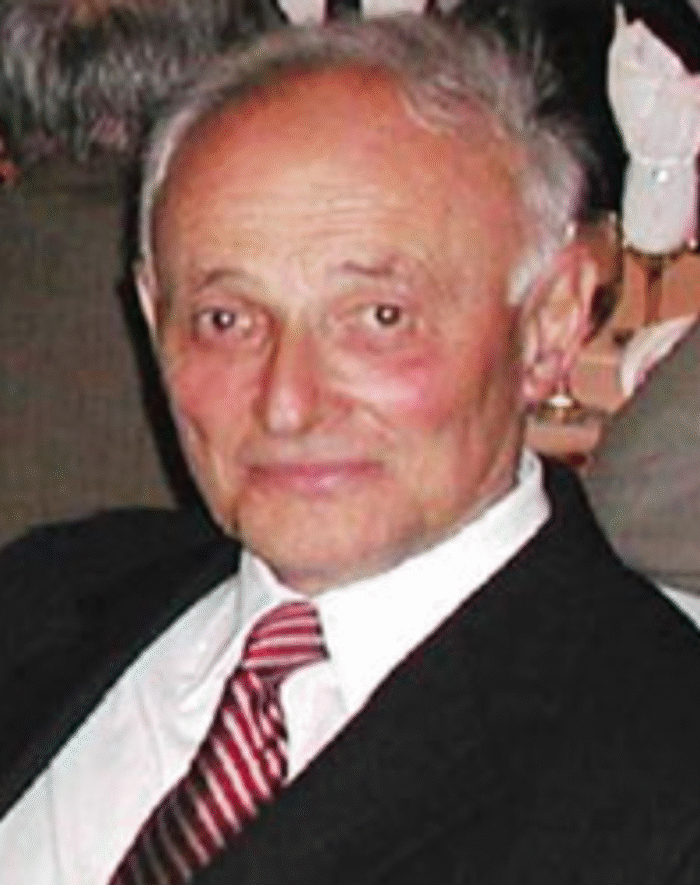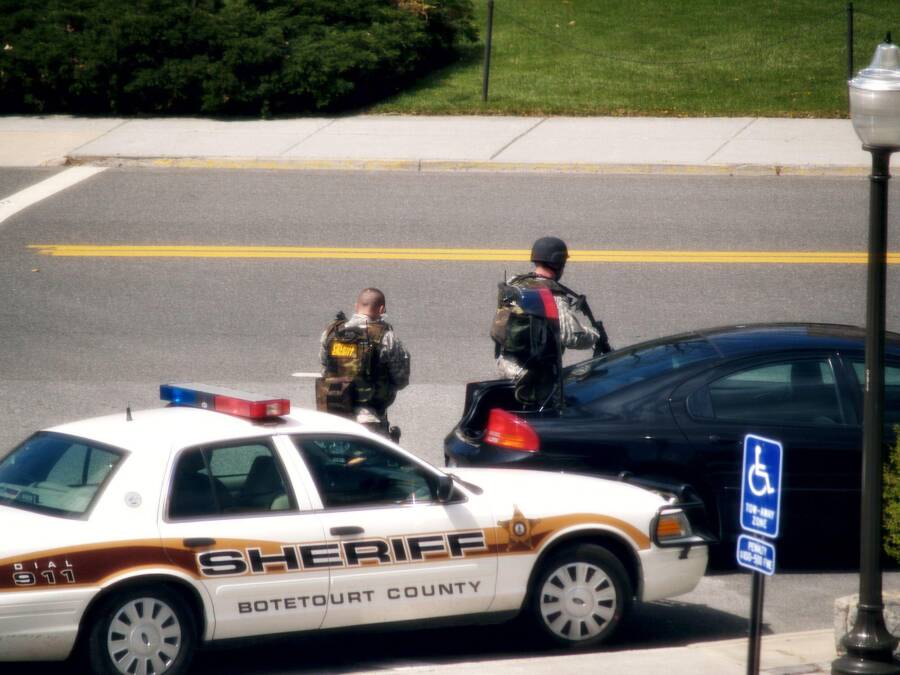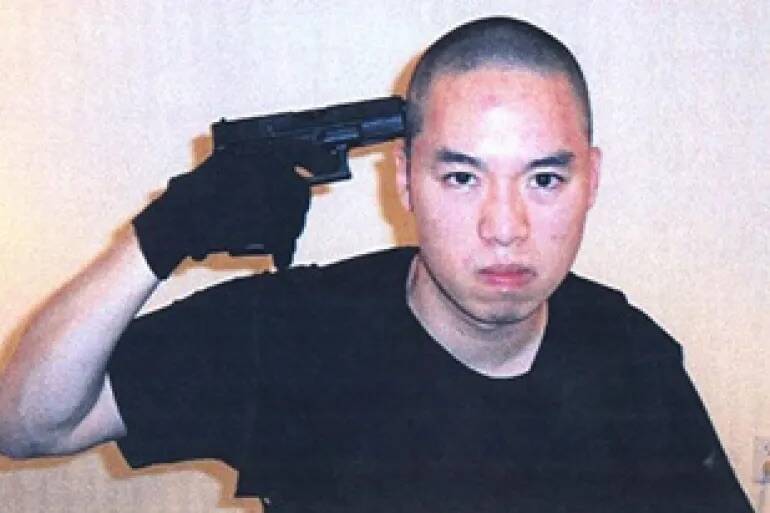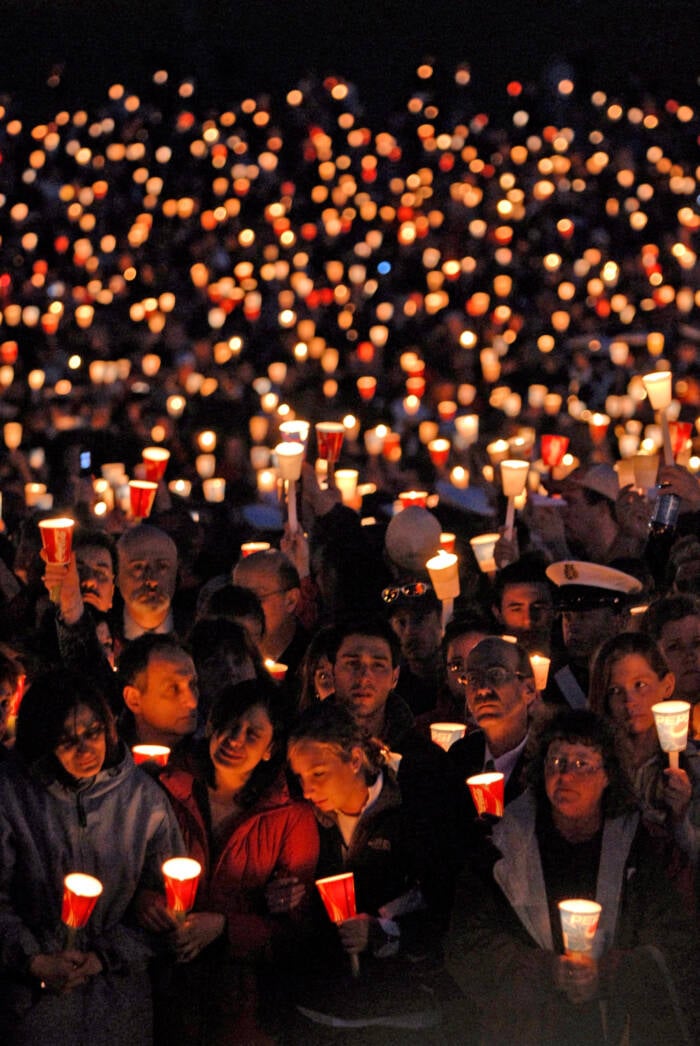On April 16, 2007, Virginia Tech professor Liviu Librescu tragically died during the worst school shooting in U.S. history — after saving the lives of 22 students.

Virginia Polytechnic Institute and State UniversityProfessor Liviu Librescu, the Romanian American engineer and teacher who died protecting his students at Virginia Tech.
Liviu Librescu’s life was bookended by tragedy. As a Jewish child in Romania during World War II, Librescu was forced to grow up in a labor camp and a ghetto at the height of the Holocaust.
He survived, however, and went on to study aerospace engineering. When he refused to swear allegiance to the regime of Nicolae Ceauşescu, a communist leader of Romania, it nearly ended Librescu’s career. Luckily, a smuggled manuscript that he published in the Netherlands garnered international attention, and Librescu found new opportunities in Israel.
Librescu first got a job at Tel Aviv University as a professor of aeronautical and mechanical engineering before leaving on sabbatical for the United States. There, he eventually took a new job with the Virginia Polytechnic Institute and State University in Blacksburg, Virginia.
It was a good life, one that was well earned. Liviu Librescu had a brilliant mind and reportedly published more articles than any other professor at Virginia Tech. But on April 16, 2007, one of the worst tragedies in modern American history robbed 32 innocent people of their lives.
That day, the day of the Virginia Tech shooting, gunman Seung-Hui Cho entered the Norris Hall Engineering Building and opened fire on classrooms. Librescu was teaching in Room 204. As Cho approached, Librescu yelled for his students to escape through the room’s windows, and physically blocked the door, even as Cho began firing his weapon.
Thanks to Liviu Librescu, all but one of his students made it out of the classroom alive. Tragically, Librescu did not survive.
Liviu Librescu’s Life Growing Up In Nazi-Allied Romania During World War II
Liviu Librescu was born on August 18, 1930, to a Jewish family in Ploieşti, Romania. When Librescu was still a young child, Romania allied itself with Nazi Germany and joined the Axis powers in 1940.
That year, Ion Antonescu assumed full control of the country and ordered the Romanian military to invade the Soviet Union. Around the same time, Antonescu, following Adolf Hitler’s lead, ordered that thousands of Romanian Jews should be murdered or placed in labor camps or ghettos. Librescu’s family was first sent to a labor camp and then a ghetto in Focsani.
“We were in Romania during the Second World War, and we were Jews there among the Germans, and among the antisemitic Romanians,” Librescu’s wife Marlena recalled, according to the Associated Press.

Public DomainIon Antonescu, the Romanian dictator who allied the country with the Nazis.
Liviu Librescu and his future wife Marlena survived the horror and bloodshed, but many other Romanian Jews were not so fortunate.
Between 280,000 and 380,000 Romanian and Ukrainian Jews were killed by Nazi-allied Romania during World War II, according to a 2004 report issued by an international panel. The report concluded:
“Of all the allies of Nazi Germany, Romania bears responsibility for the deaths of more Jews than any country other than Germany itself. The murders committed in Iasi, Odessa, Bogdanovka, Domanovka, and Peciora, for example, were among the most hideous murders committed against Jews anywhere during the Holocaust. Romania committed genocide against the Jews. The survival of Jews in some parts of the country does not alter this reality.”
Following the Soviet occupation of the country, a coup orchestrated by King Michael of Romania deposed Antonescu and shifted Romanian allegiance to the Allied forces. But continued Soviet occupation following the war also proved to be a problem for King Michael, as it soon became clear that Romania was nearing a communist government of its own.
In December 1947, the king was forced to abdicate his throne.
Amidst the country’s communist government, Librescu became a successful engineer, but a new regime later forced him to leave the country.
Resisting Nicolae Ceauşescu’s Regime — And Finding New Opportunities In Israel And America

Find a GraveFrom surviving the Holocaust to resisting a communist regime, Liviu Librescu faced many trials throughout his life.
Gheorghe Gheorghiu-Dej served as the first communist leader of Romania from 1947 to 1965. Before that, he had been imprisoned at the Târgu Jiu internment camp, due to his communist activities.
While imprisoned, he had met Nicolae Ceaușescu, a fellow communist supporter, and began teaching him about Marxist-Lenin theories. They grew close, and after the Soviet occupation of Romania in 1944, the two men escaped prison. As Gheorghiu-Dej consolidated power, Ceaușescu stood by.
So, when Gheorghiu-Dej died in March 1965, it opened a power vacuum at the head of the Romanian government. Ceaușescu, despite his close ties to Gheorghiu-Dej, was initially elected general secretary.
Eventually, Ceaușescu took control of the whole country, and his motivations were clear. He hoped to turn Romania into one of the world’s most powerful nations — and he was willing to go to any lengths to do so.
Many of his political opponents were imprisoned and sometimes even tortured, and some started to refer to Ceaușescu as a dictator.

Public DomainNicolae Ceauşescu and Kim Il Sung of North Korea in 1978.
According to a biography from Virginia Tech, Liviu Librescu was in the midst of earning his undergraduate degree in aeronautical engineering while the Communist Party was on the rise in his country.
Eventually, he found work at Romania’s aerospace agency, but when he refused to swear allegiance to Ceaușescu’s regime, it nearly ended his career. He showed great promise, but he now had to conduct some of his work secretly, smuggling his papers to the Netherlands and other foreign nations for publication, as he was banned from publishing in Romania.
Librescu became determined to leave the country and asked permission to move to Israel — which resulted in him being fired from his job.
Eventually, however, he and his family were able to make the move, thanks in large part to the intervention of Israeli Prime Minister Menachem Begin. In Israel, Librescu quickly found work teaching aeronautical and mechanical engineering at Tel Aviv University, and remained in his position until 1985.
That year, Librescu left on sabbatical for the U.S., where he began working at Virginia Tech. Though it was meant to be a brief position, Librescu and his family decided to stay and settle in Blacksburg, Virginia, and according to the university, he “became one of Virginia Tech’s most respected educators and researchers in the field of aeronautical engineering.”
He ultimately stayed at the school until the day he died.
The Virginia Tech Shooting: How Liviu Librescu Became A Hero

ZUMA Press, Inc./Alamy Stock PhotoPolice outside Virginia Tech on the day of the shooting.
By the time the 21st century rolled around, Liviu Librescu found himself past the standard retirement age. Yet he continued to teach.
“It is a question of pleasures,” he explained in 2005. “It is not a question of organizations or calculations. If I had the pleasure to do this, then I will put time aside to do this. It is personal freedom. If you are limited, then you miss the freedom… I would like to be free as a bird and fly everywhere.”
Throughout the course of his career, Librescu counted a long list of achievements and honors. He published hundreds of papers and articles, gave more than 40 invited lectures at various universities, and received numerous awards for his research and skills as an educator.
“If you wanted an honest answer to something, if you wanted someone to say to you that you must be crazy… or if you wanted somebody to tell you in a straightforward way that you should do something or not do something, he was the man,” Ishwar Puri, the former head of the engineering science and mechanics department at Virginia Tech, told Tablet Magazine.
Liviu Librescu had long dedicated his life to his students, but on April 16, 2007, he would sacrifice his life for them as well.
As he was teaching a solid mechanics class in Norris Hall’s Room 204, he heard the sound of gunshots. Recognizing the danger, he physically blocked the classroom door — as it could not be locked from the inside — and instructed his students to escape through the windows.
“I just remember looking back and seeing him at the door,” one student later told The Roanoke Times. “I don’t think I would be here if it wasn’t for him.”
On the other side of the door, the gunman, 23-year-old Seung-Hui Cho, fired multiple shots from the firearms that he carried with him.

NBC NewsA photograph sent to the media by Seung-Hui Cho, the Virginia Tech shooter.
Librescu was shot four times through the door, and at 76 years old, he could not hold Cho back forever. By that point, 22 of his students had already made it to safety, but he and one student, Minal Panchal, were both exposed and attempted to take cover when Cho entered the room.
Apparently enraged that the other people in the class were safe, Cho fatally shot both Librescu and Panchal. They were among the 32 total victims who died that day. Shortly after the massacre, Cho turned the gun on himself, ending his own life as police stormed the building.

ZUMA Press, Inc./Alamy Stock PhotoA candlelit vigil held at Virginia Tech after the shooting.
Coincidentally, the Virginia Tech shooting took place on Holocaust Remembrance Day, which Liviu Librescu’s son Joe later said was symbolic. Joe was also not surprised by his father’s heroic actions: “This was typical of him. He did not fear death and at all times tried to do the right thing.”
Then-President George W. Bush later memorialized Librescu at a special service held at the United States Holocaust Memorial Museum after the shooting. “That day we saw horror, but we also saw quiet acts of courage. We saw this courage in a teacher named Liviu Librescu,” Bush declared.
“With the gunman set to enter his class, this brave professor blocked the door with his body while his students fled to safety. This Holocaust survivor gave his own life so that others may live.”
After learning about Liviu Librescu’s final heroic moments, read the inspiring stories of other heroes who sacrificed themselves to save others. Then, see how these ordinary people became heroes during the Holocaust.





